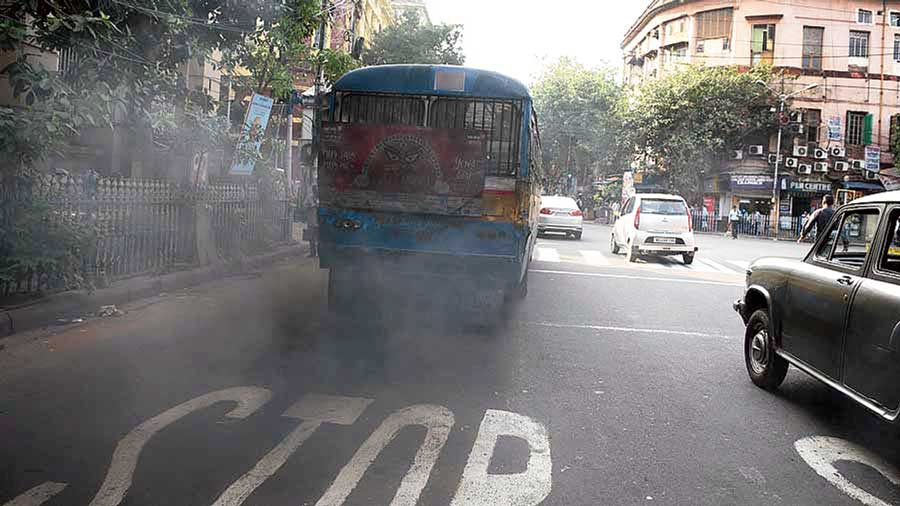The level of PM2.5 — the most toxic air pollutants — in the city’s air has improved marginally over the last four years, but is still much above the national limit, according to a report published on Tuesday.
PM2.5 can enter the crevices deep inside the lungs and trigger a range of critical ailments, including cancer.
The report — based on the Central Pollution Control Board data generated under the National Clean Air Programme (NCAP) and prepared by an organisation called Climate Trends — shows the annual average concentration of PM2.5 in Kolkata reduced from 56 microgram per cubic metre of air in 2019 to 50 microgram.
The nationally permissible level is 40 microgram.
Kolkata also improved its position from being the 10th worst city to 29th among 77 critically polluted cities in India from 2019 to 2022.
The condition of many cities has worsened during the period. “We have definitely improved a lot,” said an official of the West Bengal Pollution Control Board (WBPCB).
In case of another key air pollutant — PM10 — Kolkata’s annual average was found to be 102 microgram in 2022, around 40 per cent higher than the permissible limit of 60 microgram.
According to the NCAP, the Union ministry of environment, forest and climate change had given around Rs 536 crore to the West Bengal government since 2019 to reduce Kolkata’s air pollution level.
“In September 2022, the Centre had set a target of a 40 per cent reduction in the particulate matter concentration in cities covered under the NCAP by 2026. Clearly, Kolkata is way behind,” said an air pollution expert associated with the NCAP.
“It is difficult to achieve the target but we are trying our best. We have prepared an action plan and started to act on its basis,” said WBPCB chairman Kalyan Rudra.
The data shows that apart from Haldia, the average annual PM2.5 and PM10 levels in the “non-attainment” (critically polluted) cities in West Bengal is much higher than the national limit. Durgapur is the eighth-most polluted city in the country with an annual PM10 average of 170 microgram in 2022.
“There is a marginal improvement in (Kolkata’s) air quality in 2022, especially when we observe the data from 2019. However, the central board has already issued stricter targets... and many cities are far from reaching the targets,” said Aarti Khosla, director, Climate Trends.
“Kolkata has taken certain steps and that seems to have contributed to the slight reduction. The city needs to take several hard steps to reduce pollution from major sources like transport, construction and waste burning,” said Anumita Roy Choudhury, of the Centre for Science and Environment.
